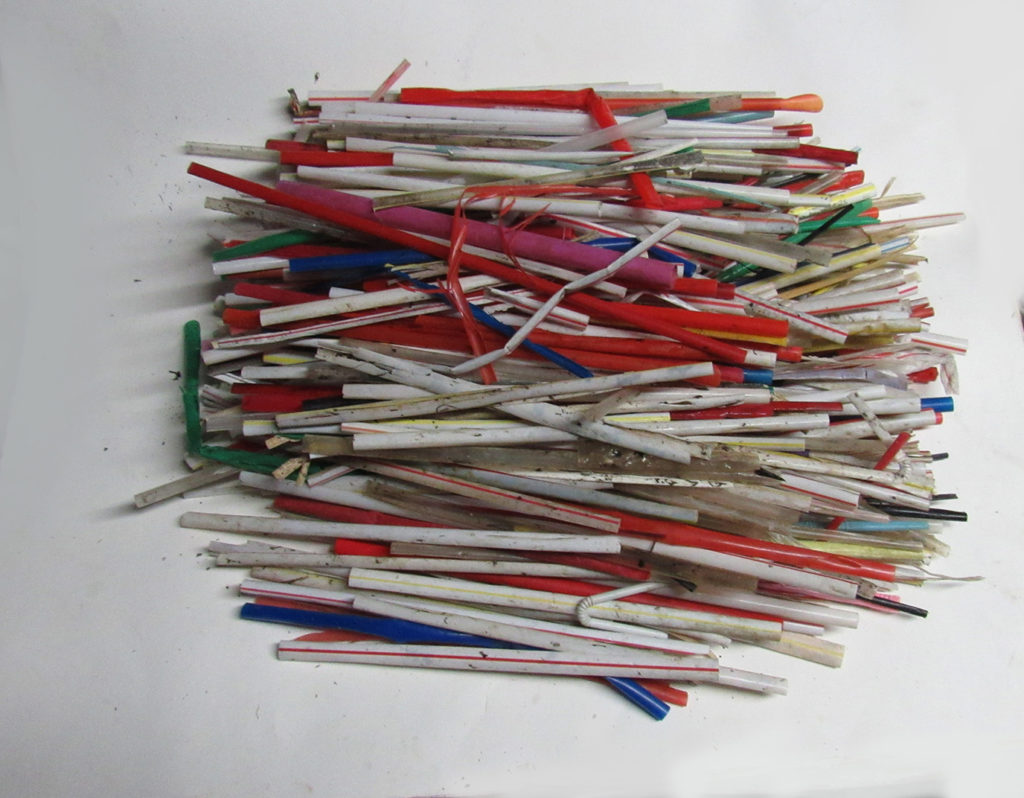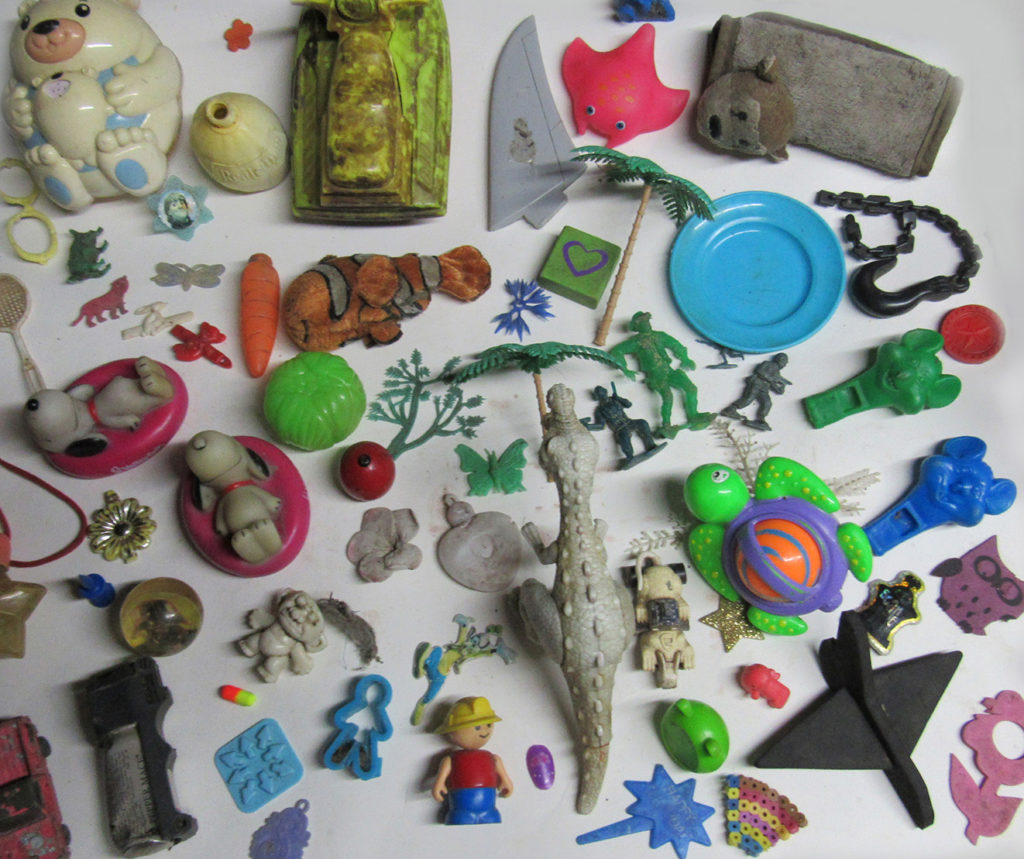What We Leave Behind
Sean Connaughty reflects on the tales left behind in our garbage, stories about human choice and ignorance that will be parsed by generations to come, as seen through the lens of his recently released "Anthropocenic Midden Survey" and a new documentary on nuclear waste, "Containment."
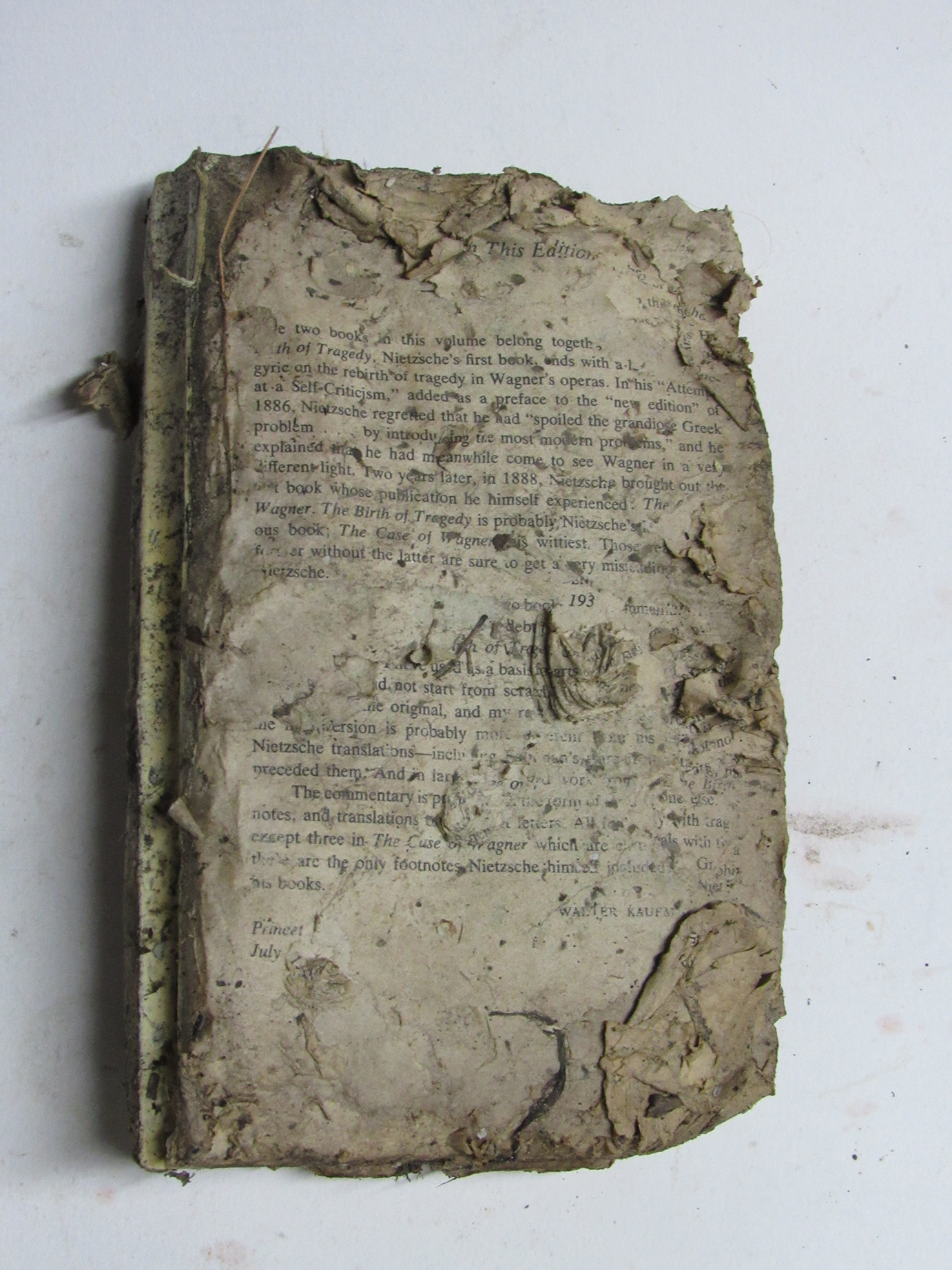
Mined uranium is transformed into plutonium in the production of nuclear energy. It’s a highly radioactive material; the only place in the universe where plutonium occurs naturally is within stars and black holes. Its byproducts remain deadly for 10,000 years. The complexity and difficulty of containing this waste is astronomical and, worse, such efforts have all too frequently failed with terrible consequences. To avert the possibility of future catastrophic intrusion on stored nuclear waste for generations to come, one must imagine myriad scenarios in some distant future, say ten millennia from now, that might cause a breach in the containment of this lethal radioactive material.
The life of any given language is roughly 1,000 years, so whoever finds this waste in the future may have no way of understanding the danger to themselves and the planet from its release. If we presume that our written warnings may no longer be comprehensible, how might we otherwise communicate something of the danger in this material—danger that cannot be seen, smelled, or tasted? This was the task of a group of artists and scientists commissioned by WIPP (Waste Isolation Pilot Plant) in New Mexico and featured in a new documentary, Containment: to imagine all possible scenarios that could lead to intrusion into stored nuclear waste, and then to come up with a way of conveying a warning sufficient to overcome the barriers of time and language, meaningful to the planet’s inhabitants over a span of 10,000 years. This 10,000-year plan is entitled: Expert Judgment on Markers to Deter Inadvertent Human Intrusion into the Waste Isolation Pilot Plant.
In their words, the WIPP group wished to communicate the following:
This place is a message…and part of a system of messages…pay attention to it!
Sending this message was important to us. We considered ourselves to be a powerful culture.
This place is not a place of honor…no highly esteemed deed is commemorated here…nothing valued is here.
What is here is dangerous and repulsive to us. This message is a warning about danger.
The danger is in a particular location…it increases toward a center…the center of danger is here…of a particular size and shape, and below us.
The danger is still present, in your time, as it was in ours.
The danger is to the body, and it can kill.
The form of the danger is an emanation of energy.
The danger is unleashed only if you substantially disturb this place physically. This place is best shunned and left uninhabited.
It’s both a valuable creative exercise and a useful mindset, to attempt objectivity by removing the context of the present in attempting such a task. The challenge forces one to take in the gestalt of human endeavor, to consider the manifold consequences of human activity over not just generations, but eons.
I set myself a similar task in my own work recently, the conclusions of which are articulated in a new text piece, “Anthropocenic Midden Survey – Preliminary Report.” I extracted trash artifacts from Minnesota’s Lake Hiawatha and examined them from the vantage of archaeologists in the distant future. Today, when archaeologists study ancient cultures, valuable information is gleaned from midden sites where waste was discarded. Our waste will surely outlive us as well. What will future generations think of us? What will they learn about our lives from what we’ve discarded and left behind for them to find? Are the stories, the choices, revealed in our waste how we wish to be remembered?
My “preliminary report,” like the WIPP artists’ thought experiment, imagines the waste legacy of humankind as examined through an archaeological dig site; the site for my project is Lake Hiawatha, into which the storm drains of south Minneapolis are emptied. Like the WIPP group, this report presumes that future archaeologists will likely be examining our culture without the benefit of contemporary knowledge, language, and cultural markers we now take for granted. Even without those cues, such future investigations into our waste would plainly reveal ours to be a society at a tipping point of climatic and ecological disaster.
In the “preliminary report,” every strata of our diverse community is represented in the trash items included in the collection. For the project, I removed over 100 large bags of garbage from Lake Hiawatha in 2015. My colleagues and I sorted, counted, and displayed a ten-percent sample of the entire trash count. This work is aimed at bringing about an effective system of mitigation at Lake Hiawatha and raising awareness about community behaviors that impact water quality.
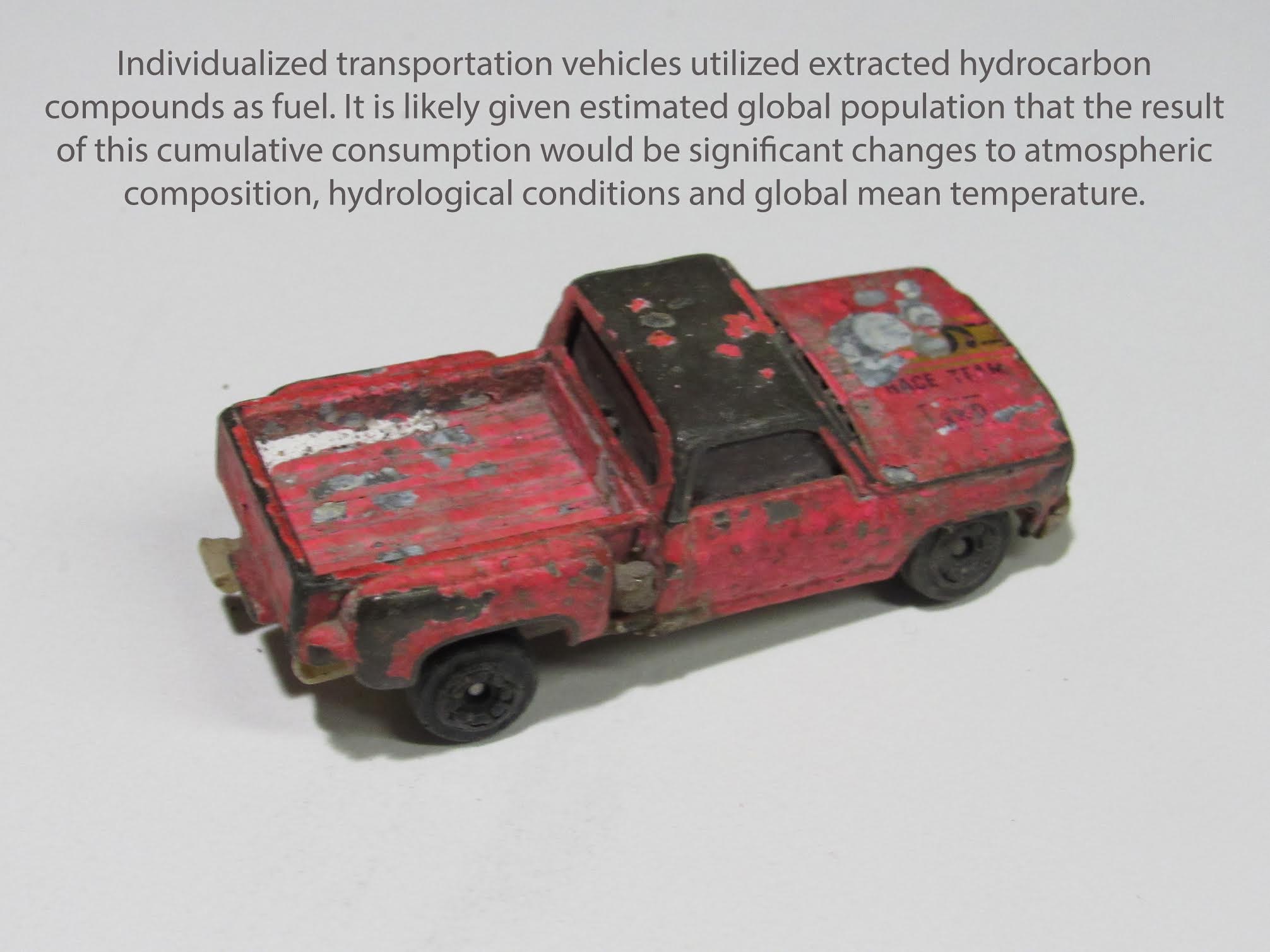
But the waste products at the center of the WIPP site are much deadlier than everyday garbage. While our plastic trash may still be around in 10,000 years, the effects of nuclear waste are both more lethal and persistent, an immediate threat to any who might eventually investigate the site, and to the planetary ecosystem as a whole well into the future.
Take stock of evidence found in our waste, and you find signs pointing to the contradictory behavior of a species whose members are caught in an addictive, corrosive cycle of consumption, dependent on destructive practices and individual consumption patterns that erode and destroy the very system of life upon which the species, as a whole, relies for survival. The curated artifacts selected by these future archaeologists for the fictional report on the waste items collected from Lake Hiawatha reveal much about current our current consumption and waste patterns, but it also offer a lens through which to see the greater dilemma that the WIPP group’s work points toward. It’s a view, writ small, of the same global stakes and circumstances of the changes endemic to our planet’s present and future.
Our waste belies our immersion in the instinctual drives that initially served us so well, the very impulses that put us at the apex of the food chain. Indeed, the drives of opportunism and predation are inherent in all of Earth’s creatures. When the wolf eats the island clean of rabbits, the wolf will starve, and yet the wolf cannot stop itself from consuming the last of the rabbits.
Our waste belies our immersion in the instinctual drives that initially served us so well, the very impulses that put us at the apex of the food chain. Indeed, the drives of opportunism and predation are inherent in all of Earth’s creatures. Every life form on the planet is the evolutionary result of millennia of fierce competition for resources—food, territory, water. When the wolf eats the island clean of rabbits, the wolf will starve, and yet the wolf cannot stop itself from consuming the last of the rabbits. This is our dilemma as well. The desire for immediate gratification evident in our modes of consumption has thus far overridden our consideration of the long-term consequences of those habits. We humans are unopposed; we have no predator above us to mitigate or curtail our influence. The whole planet, its resources and denizens, is simply there for us to consume at will. We have nothing but ourselves to stop us from devouring it completely. And in harnessing the elemental power of nuclear energy, despite knowing the risk to ourselves, to our planet, and to the future, we give tacit consent to continuing such unfettered consumption.
But there is an instinct amongst humans that might be useful in deterring further self-destructive practices. Empathy may be the only innate drive sufficient to temper our impulses to opportunism and predation. It’s empathy that might ultimately enable us to recognize the fundamental necessity for us to align our habits of consumption in ways better balanced with the natural ecosystems on which our survival depends. But even as we try to right that imbalance, we cannot avoid experiencing increasing climatic devastation. Current consumption practices, unabated, will simply generate more of it, and in greater degree: more poisoned landscapes, further loss of resources and biodiversity.
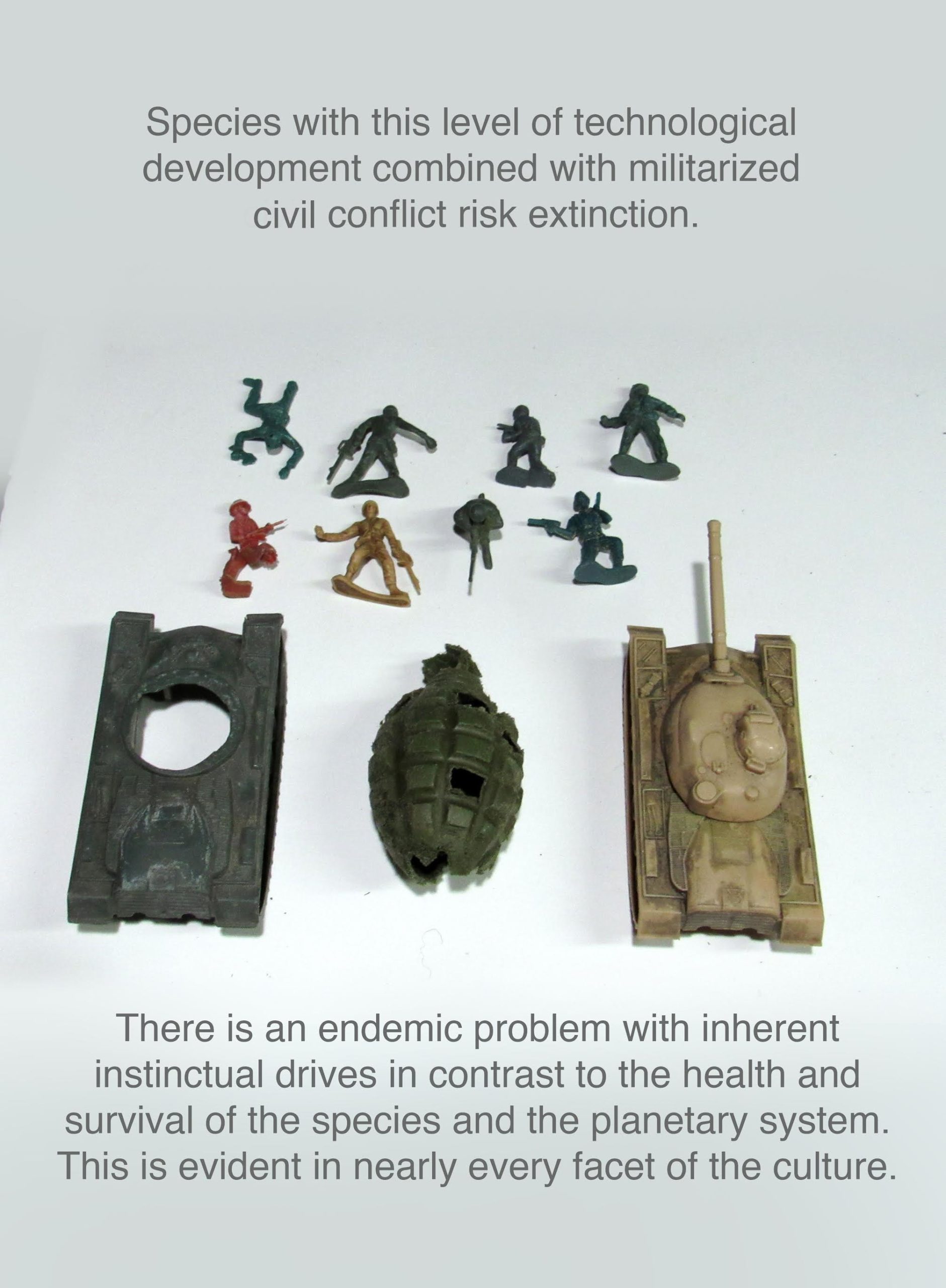
In the film Containment, we’re introduced to a 60-year-old Japanese rancher, Masami Yoshizawa, who opted to stay behind in the evacuated zone around Fukushima, where 83,000 people were evacuated after the 2011 tsunami and consequent nuclear accident. When the Japanese government gave the order to kill all irradiated cows within the zone, Yoshizawa refused and continues to care for them and the other abandoned cattle on his 80-acre Ranch of Hope. After losing the source of his income through radioactive contamination, he says, “I needed to find a new philosophy to keep on living. … There is a difference between killing cows for food and killing them because, in their contaminated state, they are no longer useful.” Despite the very real danger of his choice, it’s empathy that has given Yoshizawa sufficient reason, beyond monetary gain, to try to rectify, even in this small way, some of the imbalance and harm of our planet’s current condition.
The kind of collaboration seen in the WIPP group’s 10,000-Year Plan is likewise hopeful. It amounts to a declaration that artists can take the role of change agent, inviting them to assist society in both understanding the nature of our problems and helping to uncover new solutions. And it will surely take all of our intelligence and creativity to resolve our current global conundrum going forward.
Empathy has long been understood as a key factor in effective design; indeed, it is the very cornerstone of most successful creative endeavors. We who are artists create from a desire to communicate, to be understood. To do so effectively, an artist must be able to imagine how the viewer will perceive the work, how they will react, how they will feel in response to it. Artists craft their work to maximize its ability to reach others on a basic and instinctual level. And artists are natural born problem-solvers. Creativity entails the making of something new and somehow valuable; inherent in the idea is the discernment of a problem, a lack that once identified the artist attempts to fill and rectify. The creative process requires taking on a new perspective, wherein the artist must put aside control and certainty and collapse the boundaries between different ways of thinking. It’s a practice that relies on attentive listening and close observation (empathy) for its full realization.
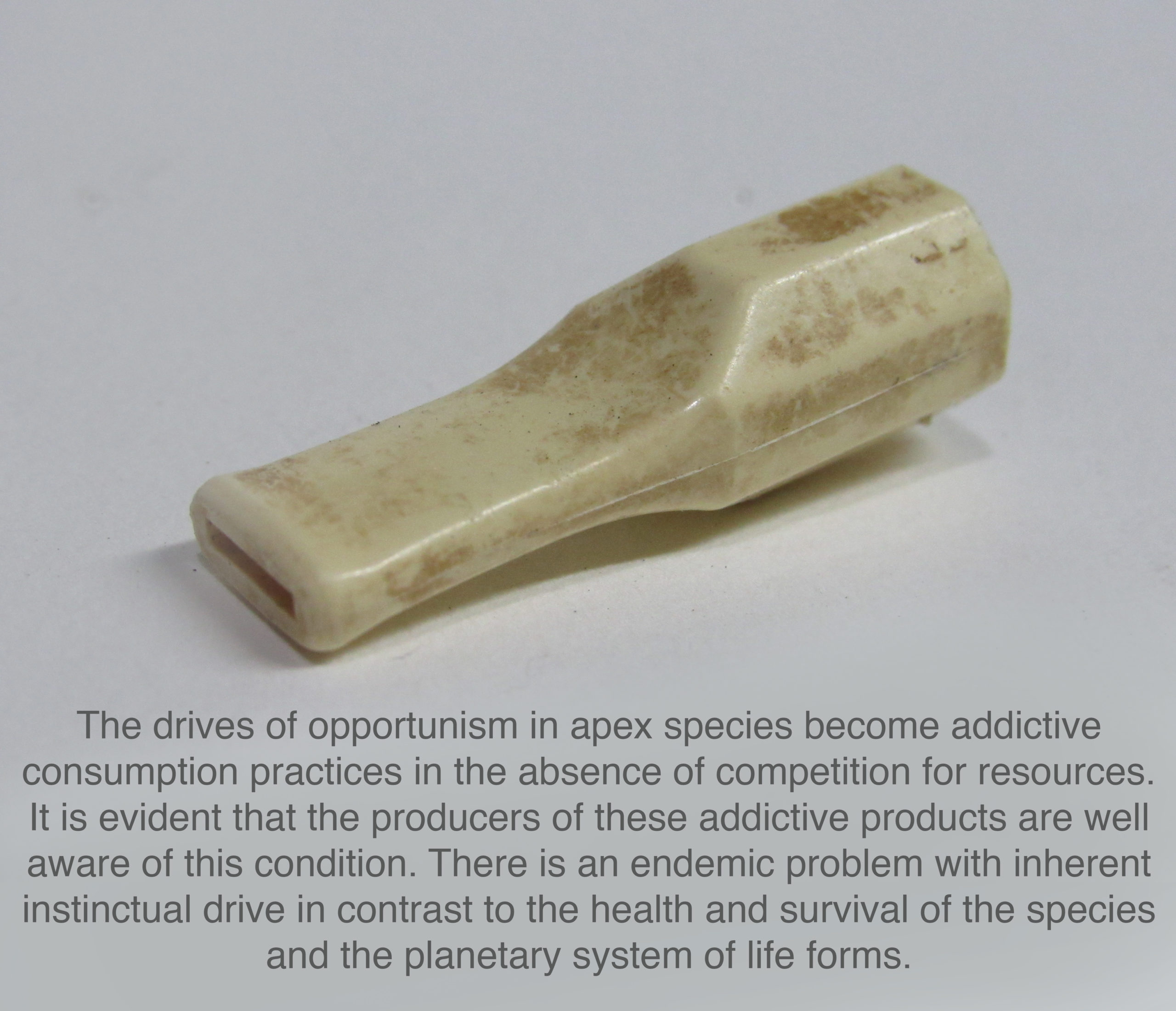
To exercise empathy is to see yourself in the other, to feel to your bones that all life is connected, as necessary and intrinsically valuable as your own. And empathy is what’s required to consider the risk in our choices, risk to others and ourselves, now and in the future. If we are to survive as a species, that fellow-feeling must necessarily extend to the entire system of life that supports us.
Perhaps teams of artists and scientists can work together to help avert our self-destruction, so that the what we leave behind shows visitors in the future more than just the remnants of a time when humanity, still relatively fresh from the savannah, was blithely unconcerned with the consequences of its actions. Perhaps those visitors will see evidence of our conscious change as well. Maybe amid all our waste, they’ll also find evidence that, while it took us a while to fully appreciate what we were doing to the planet, once we gained that awareness, we strived to correct our destructive practices.
Related links and information: Containment, a documentary by Peter Galison and Rob Moss, was screened at the Walker Art Center as part of the Cinema of Urgency film series on March 17. The center is hosting free, monthly documentary screenings and topical conversations on urgent issues of the day from March through October 2016.
